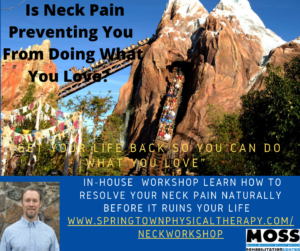How Well Do You Breathe?
Most people don’t consider or think or about their breathing just because it happens naturally, which is good.
However, what happens is most people end up breathing incorrectly, whether it’s from a trauma, injury, or just changes in postural habits.
Your breath has a tremendous effect on your health.
It can actually affect multiple areas of your life.
Proper breathing, results in greater oxygenation of your blood, improved HRV, which is heart rate variability. Think about your heart as an elastic band. And so the more elastic… and the more flexible it is, the better. So you want a higher HRV. I will dive deeper into this on a different blog.
Breathing also affects your autonomic regulation, so that’s basically how your nervous system works. It can affect your posture, your overall stability and motor control, which is highly important, as you are going through physical therapy.
So breathing properly is a big thing that can definitely help you and affect your recovery.
Breathing also has an effect on fluid dynamics, how your blood moves, the lymph system, the cerebral spinal fluid, which is the fluid that surrounds your brain and spinal cord, as well as the blood flow or the venous return to your heart.
As you can see breathing properly has several effects within the body.
Now before we talk about what dysfunctional breathing patterns look like, first let’s cover what normal looks like.
Normal breathing should be a nasal breathing pattern. Breathe in through your nose and out through your nose as well, 10 to 14 breaths a minute is a normal range. You should have your mouth closed.
You should see and or feel your lower ribs and your abdominal wall expand and contract. Think about when you see a newborn laying in the crib, sleeping, and if you watch them, you’ll see that belly properly rise and fall, rise and fall. That is actually correct.
And why do we want to breathe through our nose?
Breathing through the nose helps to:
One – filter the air. Especially since we live here in Texas, we have high pollen counts almost every day of the year.
Second – Breathing through your nose increases nitric oxide, which is a vasodilator. This opens up your blood vessels and helps the oxygen that you’re breathing in bind into your blood. This results in greater oxygenation of your blood.
You may have heard of people in the hospital getting their pulse oxygenation checked. It’s the percentage of oxygen within the blood. You want that at a high 90’s level, close to 97-98%.
Now what are some signs of poor breathing?
Poor breathing habits may include a lot of upper chest movement.
People that are stressed, carry their stress in their shoulders and neck. If they have a day job where they’re at the desk all the time their neck and upper back gets really tight.
Most of the time stressed out people are chest breathers.
You may also see a paradoxical breathing pattern. This basically means it’s opposite of normal.
When you normally breathe in, you should feel your belly expand however with paradoxical breathing, when you breathe in the belly actually goes in.
Other signs of poor breathing habits that you may recognize is if you sigh a lot or you yawn frequently. This is described as air hunger. It could also be an issue with your sleep as well, but a lot of times the frequent yawning is your body is trying to tell you you need more oxygen, more air.
Breathing through the mouth is also a dysfunctional breathing habit.
What is really interesting, is the link as seen in several studies between dysfunctional breathing habits and:
- chronic low back pain,
- chronic ankle instability, (people that have frequent ankle sprains).
- poor posture
- shoulder blade issues, meaning the shoulder blade sits funny on the trunk, and if the shoulder blade is not functioning or moving properly, that’s going to affect shoulder and shoulder pain,
- pelvic pain,
- sacroiliac joint pain, which is a similar type of pelvis-type pain, it can be neck pain, so we talked about people that carry a lot of their tension and their stress in their necks…
- it can lead to depression,
- anxiety and
- poor brain function.
The other thing that poor breathing does, as mentioned previously, it’s linked to the autonomic nervous system. Part of the autonomic nervous system is the sympathetic system. This is the fight-or-flight type response. This will cause your heart rate to get elevated and your pupils to dilate as your level of stress goes up.
When people are in a chronic state of sympathetic activity, when they are constantly in that fight or flight type of response it can have several devastating effects:
- increases the perception of muscle pain
- increase in mood swings
- alter the appetite
- leads to poor sleep
- fatigue
- inability to focus, (brain fog)-affecting your ability to concentrate and
- possibly lead to depression.
This heightened sympathetic activity and dysfunctional breathing patterns can have some serious health effects.
Okay now that I have talked about all of the bad stuff how do we fix this?
Well, here are a couple of breathing tips that you can start to practice and see how it affects either your mood or your ability to concentrate and your energy levels first.
Start by placing your tongue on the roof of your mouth. You want to place one hand on your stomach, and as you slowly start to breathe in through your nose for about a three to four second count, feel your belly expand and push against your hand.
Pause and then slowly exhale.
I like to take about six seconds to breath out and pull my belly in, pause, and then repeat that cycle.
Some recommend making your exhalation (your breath out) anywhere from two to four times longer than the inhalation.
This 4 second in and 6 second out is highly variable.
You will need to practice to see what feels right. Note it might also feel different at different times of the day.
For example, in the morning you are coming out of a deep sleep, and may be able to do 4 in and 6 out but if you are under some stress during the day, it may be a three-second in and a five-seconds out.
You might have to change your breathing habits just a little bit.
I encourage you to practice this several times a day, either before or after an important meeting to get you set before so you can really focus and concentrate, or if the meeting was a little bit stressful then breathing after.
If you’ve had some stressful events, say you had a stressful drive home or something didn’t go right at the office or the house. Try spending three to five minutes of focused breathing, it’ll make a world of difference.
I try to do a session in the morning, sometimes mid-afternoon and before bed. It really helps me to calm my mind and get into a relaxed and focused state, especially if I’m gonna do some deep work.
So remember, the Kaizen principle:
The KEY is to start so small that it is impossible to fail.
Have a great week and let me know how you are doing with your breathing and what did you notice? Did you find this information helpful? If so, let me know.


